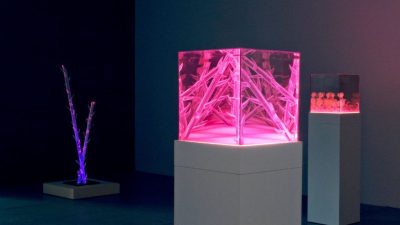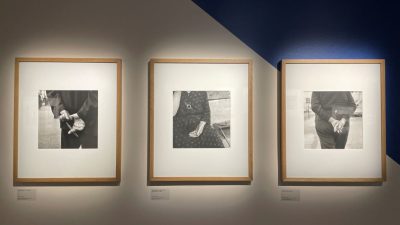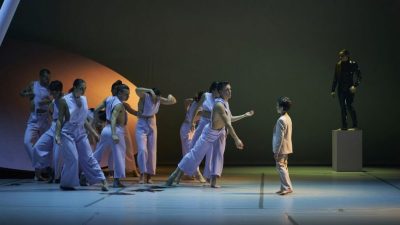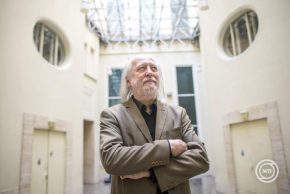Two years ago during our interview, Levon Eskenian, leader of the Gurdjieff Ensemble, explained how they had to change their concert programme because his wife, pianist Lusine Grigoryan, was not allowed to travel to Budapest in the midst of the pandemic. Time did justice to her, however, as she will soon give an unforgettable concert in Veszprém, Hungary at the Hangvilla Concert Hall on 11 October at 7pm. You can once again meet Gurdjieff, Komitas, Bartók, and a few more surprises! I talked to the power couple of Armenian music, Lusine Grigoryan and Levon Eskenian (who translated Lusine’s answers into English), about the upcoming concert.
How did you get the chance to play in Veszprém this time?
Veszprém is now the European Capital of Culture, and it is cooperating with other cities from all around Europe. They reached out to Gyumri to have a series of concerts, and I will be one of the three Armenian presenters who represent this city. I was born in Gyumri, just like George Gurdjieff, so it was no question to include him in the programme. Apart from my connections to the city, it is another fact that Hangvető, the organiser of the Interurban the cultural events in Veszprém, is also the distributor of ECM records in Hungary. Being familiar with my Komitas “Seven Songs” CD album released on ECM records, they invited me to present a solo piano concert of Armenian composers in Veszprém.
Who else will be there alongside him?
The organisers asked me to bring works by Armenian composers, but this is also a great occasion to do what I already planned to do two years ago, namely, to bring Komitas and Bartók on the piano together. So apart from Gurdjieff and Komitas, their Hungarian contemporary Béla Bartók will also be in the programme. The three of them represent historical times, on the one hand; and on the other hand, two young composers, Artur Avanesov and David Balasanyan, represent our current times.
Through Balasanyan, there will be another Hungarian connection: his works are dedicatedly influenced by György Kurtág. They are called ‘Microludes’, and he’s still composing them. I will bring the first book in those series and play from that. And I chose the piece ‘Albumblatt’ by Avanesov because it is so relevant today. Besides being a marvellous piece, representing deep emotions, it is noteworthy to mention that it’s written in Stepanakert. You might have seen in the news that 120,000 Armenians have been forced to leave their homes recently in the midst of the war. Most of them were forced to leave Stepanakert, now it is like a ghost city. His music keeps reminding me of all this meaningless destruction of human lives and culture.
Are the historical and the contemporary pieces in a dialogue with each other?
All of these works of art are very fitted to feature at the same concert together. In all cases, you have to listen very well to understand all the layers and messages delivered by the piano. In the case of the contemporary pieces, I will need to express specific sonorities and timbres. The dialogue between Balasanyan and Kurtág, the impression of an elderly Hungarian composer on his young Armenian colleague, is very exciting to discover.
As for the historical composers, their pieces should be very well studied, so that the piano can imitate folk melodies and rhythms. Interestingly, all three of them worked with completely different methods. Gurdjieff travelled around the Middle East, remembered the melodies, dictated them to his students, and later one of them, Ukrainian-born Thomas de Hartmann, transcribed these for the piano. Those are the pieces I am going to play at the concert.
The other two, Komitas and Bartók, worked in different ways to Gurdjieff, but to some extent also to each other. Komitas personally transcribed the Armenian melodies in the villages, whereas Bartók recorded them on the spot. Nevertheless, both of them studied folk music thoroughly and rigorously, thus being the pioneers of ethnomusicology. They tried to keep the melodies as intact as possible, and based their piano compositions on them. Through their work, a new language was born in classical music: it was not merely harmonising folk music, but creating new harmonies. We can say that their approach revolutionised piano music.
Unfortunately, the piano pieces written by Komitas are still not widely known, musical scores are rarely printed and distributed. This concert will provide a great opportunity to promote these works. And I cannot emphasise how happy I am to be able to bring Komitas and Bartók together, accompanied by three other wonderful composers to take part in this never-ending musical dialogue.



























Comments
1 Responses to “Lusine Grigoryan and the neverending Hungarian-Armenian dialogue”